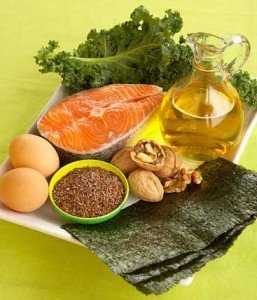FISH OIL AND OMEGA 3
Many people take Fish Oil supplements to reduce the painful symptoms of inflammatory diseases like arthritis. Fish oil is rich in the essential fatty acid omega-3. Until recently these nutrients received very little attention. But their healing capacity and their importance for good health is now well recognised.

Scientists have been aware of the benefits to health of omega-3 fatty acids for about sixty years. They are particularly valued for their role in helping clear up skin diseases such as psoriasis and eczema. For about thirty years they have been thought to be effective aids to reduce cardiovascular risk and heart attack. But there are many other diseases which affected by inadequate dietary omega-3.
The Difference Between Omega-3 And Omega 6
Over the last few years there has been an explosion in public awareness of the benefits of omega-3. With this awareness has come the widespread use of supplements to address deficiency related health problems.
If you don’t know the difference between omega-3 and omega-6 you’re not alone as most other people don’t either. Our diet now contains many foods high in omega-6 such as breads, biscuits and even grain-fed meat. While we need more omega-6 than omega-3, the ratio being 4:1, the ratio in our diets is actually closer to 10 – 20:1. Therefore we’re getting far more omega-6 than we need at the expense of sufficient omega-3. The omega-6 we’re eating often comes from a poor, highly processed food source. The effect of this unbalance is to cause many other health problems.
Omega-3 and omega-6 are both polyunsaturated fatty acids that we need to eat because our bodies cannot synthesise them. Omega-6 is needed in greater quantities but it is also more easily obtained. It occurs in many of the foods that we eat in large quantities in the western diet. Whilst we need much less omega-3 the amount that most Australians consume falls very far short of their daily requirements.
What Are Essential Fatty Acids?
Simply put they are EPA, DHA, GLA, and OA.
- EPA ( eicosapentaenoic acid) is great for a healthy heart and body
- DHA (docosahexaenoic acid) for healthy mood, mind and memory
- GLA (gamma-linolenic acid) for healthy skin, hair and hormones
- OA (oleic acid) for healthy blood pressure and cholesterol levels.
EPA and DHA occur together in nature and so should always be taken together, along with OA (which is omega-9).
GLA is omega-6 and works well in combination with the other nutrients but as we receive more than adequate quantities in the western diet we do not need to supplement GLA.
Omega-3 Deficiency
Deficiency of DHA and EPA has been shown to be linked to many different health issues and the list seems to keep growing. Just a few conditions that indicate a need for more high omega-3 foods in your diet are:
- depression
- cardiovascular disease
- Type 2 Diabetes
- fatigue
- dry and itchy skin
- brittle hair and nails
- difficult concentration
- joint pain
But there are many more.
Omega 3 Food Sources
Before you consider taking an omega-3 supplement you really need to consider
Disclaimer.
All information and opinions presented here are for information only. They are not intended as a substitute for professional advice offered during a consultation. Before trying any of the treatment suggested on this site please consult with your health care provider.
© Catherine Bullard 2012. Unauthorised use and/or duplication of this material without express and written permission from this blog’s author and/or owner is strictly prohibited. Excerpts and links may be used, provided that full and clear credit is given to Catherine Bullard and/or Happy Holistic Health with appropriate and specific direction to the original content.


